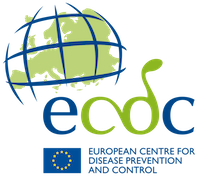Association of receipt of Pandemrix™ and narcolepsy in children and adolescents in the UK (England)
Following the reports from Finland and Sweden of an association between the AS03-adjuvanted influenza A H1N1 (2009) pandemic vaccine (Pandemrix™, GSK, Dresden, Germany) and the development of narcolepsy and often cataplexy in children and adolescents a number of national authorities have mounted retrospective analytic studies. (1-6) The studies are listed on ECDC website in a timeline with the latest study coming from an established research group in the UK that have assessed vaccine safety signals for decades.
Risk of narcolepsy in children receiving an AS03 adjuvanted AH1N1 (2009) influenza vaccine: retrospective analysis of cases diagnosed by sleep centres in England
Miller E, Andrews N, Stellitano L, Stowe J, Winstone A-M, Shneerson J, Verity C
BMJ 2013;346 doi: http://dx.doi.org/10.1136/bmj.f794 (Published 26 February 2013)
Following the reports from Finland and Sweden of an association between the AS03-adjuvanted influenza A H1N1 (2009) pandemic vaccine (Pandemrix™, GSK, Dresden, Germany) and the development of narcolepsy and often cataplexy in children and adolescents a number of national authorities have mounted retrospective analytic studies. (1-6) The studies are listed on ECDC website in a timeline with the latest study coming from an established research group in the UK that have assessed vaccine safety signals for decades. (7, 8).
Working with public funds the UK researchers (led by the Health Protection Agency) searched exhaustively for cases of narcolepsy in children aged 4 to 18 years with onset from January 2008 through July 2011. (8) Case finding was through sleep centres and specialist paediatric neurological centres in England augmented by cases from hospital databases looking for cases diagnosed before July 2011. Data from case notes were extracted and validated by an expert clinical panel to confirm the diagnosis. The panel members were unaware of vaccine status. This essentially followed an approach some of the group had developed in looking for other rare paediatric neurological conditions. (9) Having found the cases, vaccination and clinical histories were obtained from the general practitioner records. The odds of vaccination in narcolepsy cases were compared to that in an age-matched non-vaccinated child population. The incidence of narcolepsy within 6 months of vaccination was compared with the incidence outside this period using the case coverage and self-controlled case-series methods.(10) A number of sensitivity analyses were undertaken especially attempting to control for possible more rapid referral of cases of narcolepsy in vaccinated children.
After exclusion of cases that did not fit the study criteria there were 75 remaining cases with narcolepsy and onset after 2007. Applying an international set of case criteria (American Academy of Sleep Medicine 2005) 66 of the 75 fitted definite narcolepsy criteria and 9 were probable.(11) No probable cases had been vaccinated with Pandemrix but 11 of the definite cases had been before onset of excessive daytime sleepiness, 7 within 6 months. The odds ratios (OR) for vaccination at any time prior to onset were calculated in a number of ways. In cases diagnosed by July 2011 it was 14·4 (95% CI 4·3 to 48·5) and 16·2 (95%CI 3·1 to 84·5) for vaccination within 6 months of onset. The relative incidence from the self-controlled case series analysis using cases diagnosed by July 2011 with onsets from October 2008 to December 2010 was 9·9 (95%CI 2·1 to 47·9). The attributable fraction was calculated by using the odds ratio to approximate the relative risk (RR) and then applying the usual formula [(RR-1)/RR]. This was applied to the 10 vaccinated cases and the result divided by upper and lower estimates of the vaccine doses administered to the age-group of children in the study population to give an estimate of the range of immunisations that would account for one additional case of childhood narcolepsy. This gave between 52,000 and 57,000 doses per additional narcolepsy case. The authors termed this the attributable risk and concluded that the increased risk of narcolepsy after Pandemrix™ suggested a causal association consistent with the other published studies (1-7) and the EU VAESCO Study.(12) However the authors noted that due to variable delay in diagnosis, the risk may be overestimated in the UK by more rapid referral of vaccinated cases and that long term follow up of cohorts exposed to Pandemrix™ is needed.
ECDC Comment (8 March 2013):
This is the sixth EU Member State reporting an association between the development of narcolepsy and vaccination with the AS03-adjuvanted influenza A H1N1 (2009) pandemic vaccine Pandemrix. The other five are Finland, France, Ireland, Norway and Sweden.(1-7) In addition, a European study (VAESCO) involving Denmark, Finland, France, Italy, The Netherlands, Norway, Sweden, and the United Kingdom has been conducted and led by ECDC. This VAESCO study confirmed the initial data from Finland and Sweden.(12, 13) A lower increased incidence was observed in Denmark while in the Netherlands, the UK and Italy no increase in incidence was seen. In all these latter countries, vaccination coverage was low and therefore data difficult to interpret due to limited statistical power.
Testing the possible association between vaccination with the Pandemrix vaccine and narcolepsy has been difficult for a number of reasons. In many ways narcolepsy has been a difficult conditions to study as an adverse event following immunisation (AEFI) and it was not detected through conventional pharmacovigilance mechanisms until Sweden and Finland issued their first alerts see time line. The difficulties include that the cases were first seen by clinicians not used to adverse event reporting and a long and variable interval between onset and diagnosis and hence considerable potential for under-diagnosis. (Table 1) . As the UK researchers address, a particular potential difficulty is bias due to accelerated diagnosis in vaccinated individuals. All studies conducted have made serious attempts to limit this ascertainment bias by e.g. restricting cases to those with onset or first contact to health care before any media and professional attention.
The conducted studies have used different methodologies and definitions but in spite of that the study results show similarities in the quantitative associations found with odds ratios (OR) or relative risks (RR) as follows: Finland OR=12.7 (95% CI 6.1-30.8) (2); France OR = 5.09 (95%CI 2.11 - 12.26) (4); Ireland OR 14.5 (95%CI 5.3 – 39.5) (5); Sweden by one approach RR 4.2 (95%CI 1.8-12.1) and another RR = 6.6 (95%CI 3.1-14.5) (3); and now the UK OR = 14.4 (95%CI 4.3-48.5) by one method and OR = 9.9 (2.1-47.9) by another (8). Further in the retrospective incidence rate study involving six European countries (Denmark, Finland, Italy, the Netherlands, Sweden and the United Kingdom), rates in the age group 5-19 years olds were increased after the start of pandemic vaccination compared to the period before the start of campaigns, with rate ratios (RR) of 1.9 (95% CI: 1.1-3.1) in Denmark, 6.4 (95% CI: 4.2-9.7) in Finland and 7.5 (95% CI: 5.2-10.7) in Sweden. The preliminary results from a European retrospective case control study, involving eight countries the OR assessing the most stringent criteria referral to multiple sleep latency test for the two signalling countries was 11.4 (95%CI 3.4-61) and for the non-signalling countries were 1.6 (95%CI 0.5-6.1). (13) In sensitivity analyses performed in this latter study the results became statistically significant if excessive daytime sleepiness was used as an outcome. The VAESCO case control study data will be updated shortly with further case-control sets included from Sweden and France. Overall, these are high odds ratios or relative risks obtained in all studies, and while the methodological differences make the results difficult to compare or combine it seems unlikely that they can entirely be attributed to bias when they are also found in all these countries.
The next study that is expected is an on-going epidemiological study in Canada looking for any association between narcolepsy in children and adolescents and Arepanrix™, another AS03-adjuvanted vaccine. This vaccine is also produced by GSK but in their Quebec facility in Canada with somewhat different manufacturing procedures compared to the Dresden facility. (Table 2) Results from this study are expected later this year and are crucial to the understanding if there is a difference between the two AS03-adjuvanted products and what possibly can have caused narcolepsy in immunized children and adolescents in Europe.
Table 1. Examples of difficulties encountered investigating the possible relationship between Pandemrix™ and narcolepsy
| Issues | Effect on assessment of narcolepsy safety signal |
| Narcolepsy is a rare disease | Few general practitioners and paediatricians have seen a case of narcolepsy and may not even recognize it – possibly resulting in underdiagnosis and/or delay in diagnosis |
| Narcolepsy commonly has a long and variable interval between onset and diagnosis | Considerable potential for underdiagnosis in background and incidence rate studies |
| Narcolepsy is not a known adverse event following vaccination | A previously unknown adverse event following vaccination may not be recognized and result in underreporting |
| Standardized case definition for narcolepsy and cataplexy | Different case definitions used in conducted studies – reduces comparability |
| Active case finding following safety signal | Studies may be biased by accelerated investigation and diagnosis of vaccinated but not unvaccinated cases |
| Diagnosis by specialists | The specialists seeing and diagnosing the cases are not used to reporting Adverse Events Following Immunisation (AEFI) and may result in underreporting |
| Professional attention | Studies may be biased by accelerated investigation and diagnosis of vaccinated but not unvaccinated cases |
| Media attention | Studies may be biased by accelerated investigation and diagnosis of vaccinated but not unvaccinated cases |
| Epidemiological studies assess a time association | Other studies are needed to assess causality |
| Varying vaccination coverage | Enough exposure is a prerequisite for rare events to be elucidated |
| Immunization data recorded | Existence of accurate individual recording of vaccination status by date and product are essential for quality data for conducted studies |
| Health outcome databases | Existence of health outcome databases are not readily available everywhere. In addition, data quality and data lag vary significantly and may influence study results. Independent confirmation through chart reviews by specialists unaware of vaccination status necessary to confirm diagnosis needed |
Table 2. Differences in the manufacturing processes used for seasonal and pandemic influenza vaccines in the two GSK facilities in Quebec and Dresden (information provided by GSK)
| FluLaval - Quebec | Fluarix - Dresden |
|---|---|
| Influenza viruses inactivated by UV followed by formaldehyde | Influenza viruses concentrated and purified by zonal centrifugation using a linear sucrose density gradient solution containing detergent to split the virus |
| Purified by centrifugation and disrupted by deoxycholate (Tween 80) | Further purified by diafiltration |
| Inactivated by consecutive effect of deoxycholeate and formaldehyde |
To date 759 suspected cases of narcolepsy have reported to the Eudravigilance database. Concerns in Europe have resulted in that the US CDC is organizing and funding a global retrospective study to start this year assessing adjuvanted influenza A (H1N1)2009 pandemic vaccines. (14)
Finally, the current studies conducted can only confirm a time association. To understand causality, the possible biological mechanisms behind development of narcolepsy following vaccination with Pandemrix™ must be better understood and today more than ten research groups mainly from the Nordic countries, France and the US have initiated studies. First preliminary results were reported in the First Nordic Symposium on narcolepsy held in Finland February 7-8, 2013 but no peer-reviewed articles have yet been published. (15)
Comments or questions on this public heath development are welcome and should be addressed to: influenza@ecdc.europa.eu.




